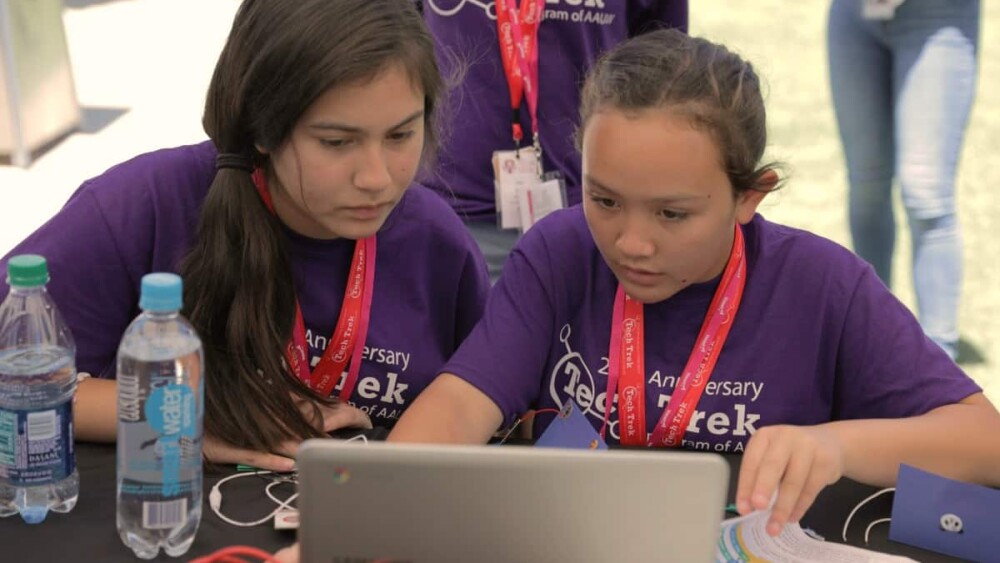Wearing bright purple shirts, clutching Viasat notebooks and high-fiving employee volunteers, they filed into Founder’s Hall. A total of 112 incoming eighth-grade girls visited the Carlsbad, CA campus June 26 for the company’s 8th annual Tech Trek.
“Today I hope you take away the incredible possibilities that are in your future,” said Cindy Dankberg, CEO Mark Dankberg’s wife, in her welcome to the group.
Tech Trek is a project of the American Association of University Women. Eight years ago, Cindy Dankberg brought it to Viasat, and it has now grown into an event staffed by almost 50 volunteer employees.
Even now, the engineering profession remains overwhelmingly dominated by the male gender, and Viasat wants to help close that gap. The day-long event is designed to develop interest, excitement, and self-confidence in middle school girls hoping to pursue STEM careers.
“Young women who have ambition in this field are in for a great ride,” Viasat product manager Lisa McKnight told the girls. “We need your help to build our future.”
This year’s Tech Trek kicked off with a Viasat overview presentation and Q&A. The girls were then split into six small groups that rotated through stations the rest of the day. Each station featured hands-on activities in engineering and related fields – including coding, robotics, satellite science – and a lab tour.
Tackling activities
At the coding station, Terra Cotta Middle School student Gwenn worked with her teammates to build their own game controller out of conductive materials. Next, they had the opportunity to use MIT’s Scratch programming language to code their own version of a Minecraft-inspired racing game.
“It’s really cool we get to code our own game,” Gwenn said. “I like that we’re getting to try new things in the science field. Science is awesome because it can change the world.”
Over at the satellite science activity, Black Mountain Middle School’s Abby used Legos to simulate information getting packed on a satellite payload. The Legos represented different types of communication – like a text, email, Instagram, etc. – and she rearranged them to figure out how to most efficiently and quickly load her board, or satellite payload.
“This is why I want to be an engineer,” said Abby. “I like how when there’s a problem, you can come up with lots of ways to solve it.”
The day wrapped up with a panel session, during which the group heard from female Viasat engineers. Several of the students said they left with a stronger sense of the company, valuable hands-on experience with technology, and boosted confidence to pursue the STEM field.
“You are so fortunate to live in a time and place where woman have great opportunities,” Dankberg told the girls. “The next Viasat could be you.”




